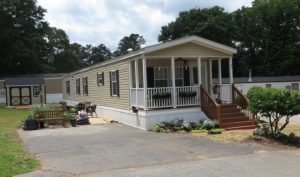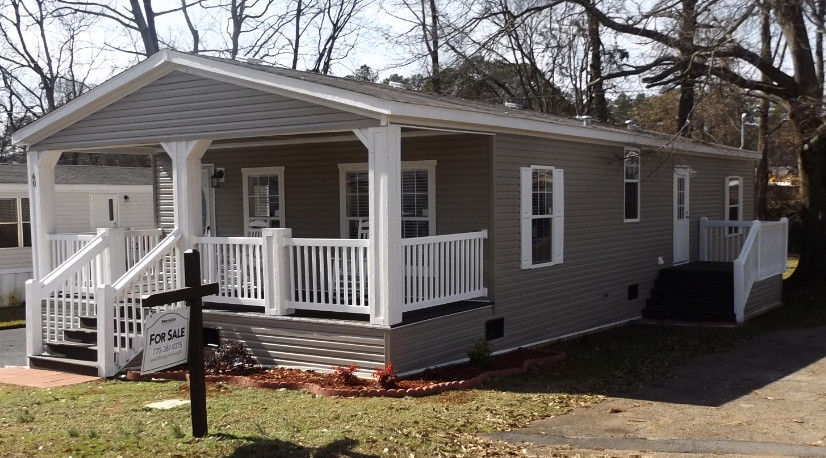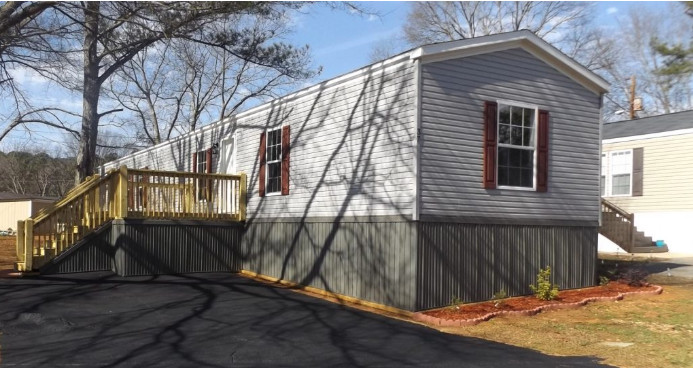Fill vacant sites, upgrade community with new homes
By George Allen, CPM, MHM and Spencer Roane, MHM
Speaking to community owners about why they should fill vacant sites is like preaching to the choir.
Community owners understand that the move to fill vacant sites steadies profitability. The purchase of a new home to fill a vacant site means one fewer homesite that needs to sustained by revenue from the occupied sites.
Besides the increase in revenue associated with site rent, there also are savings associated with the avoidance of site maintenance like lawn care and trash removal on an unoccupied site. These are two of many good reasons to fill vacant sites.

What is the Need to Fill Vacant Sites?
The best estimate pegs more than 250,000 vacant sites in the approximately 50,000 communities nationwide. Furthermore, another 250,000 old homes in these communities could be in need of replacement. Doing so with today’s attractive, energy-efficient, feature-packed new Community Series Homes goes a long way toward improving the image of a tired old “trailer park”.
Besides the advantages to owners, there are obvious advantages to the manufactured housing industry. Currently, annual production of manufactured homes is about 95,000, with at least 40 percent going to communities.
And, finally, there are advantages to consumers. Barely a week goes by that we don’t read or hear of the critical need for more “affordable housing”. There is no other form of attractive, energy efficient, feature-packed housing that consumers can buy for about $500 per month, with loan terms as short as 12 years.
So, the timely and strategic question is “How can community owners fill vacant sites?” Here are a few salient thoughts on the topic.
Lease-option
The S.A.F.E. Act of 2008 prohibited traditional seller-financing (originating a mortgage, interest rate, promissory note, collateral, amortization schedule) without S.A.F.E. Act licenses (Mortgage Loan Originator and Mortgage Broker or Mortgage Lender). The sale of manufactured homes in communities, via lease-with-option-to-purchase (L-O), is an attractive alternative to direct financing in many states, eliminating the need for S.A.F.E. Act licenses.
What might a typical L-O transaction look like, with a $5,000 option payment, $500 per month lease payment, and option to purchase the home for $10,000 at the end of the 10-year lease? For more info, see www.LeaseOptionMHSales.com.
What are the disadvantages of L-O?
Community owners would rather not be in the “finance” business. They want to fill vacant sites, but don’t want to process the paperwork and explain the intricacies of a document that leads to purchase. Community owners would rather not form a separate company to handle “financing” of homes, or collect payments other than site rent. Finally, they would rather not report payment information to credit bureaus.
Also, residents may prefer the tax deductibility of mortgage interest payments.
Better Underwriting

Whether community owners only rent sites or sell homes via the lease-with-option-to-purchase program, one thing they can do to minimize the likelihood of an undesirable outcome with a new homebuyer/site lessee is to thoroughly qualify them. Down payment, employment history, income, rental history and criminal history are critical to a new resident’s ability to pay. Acceptable debt-to-income ratios are absolutely essential.
All too often we see applicants able to afford front end site rent and house payments, but can become so overloaded with debt (that expensive truck payment, child support, or personal loans) they fail the back-end ratio.
Finally, there’s the applicant’s credit score. Generally, community owners consider it least important. This is because medical bills and the simple absence of credit characteristics so often can depress an otherwise reasonable credit score.
How to handle this screening efficiently and accurately? There is a pre-qualification worksheet that involves eight basic questions. This allows for requisite debt-to-income calculations. Often this analysis can help prospective residents recognize they should not buy such an expensive home, or, sometimes, they might be able to afford higher payments than they thought.
When to administer the pre-qualification worksheet? Recognizing that community managers have many tasks besides showing homes, the best practice is to conduct the pre-qualification before showing any homes. Doing so helps the applicant zero in on a home in their budget and avoids unnecessarily wasting managerial time.
New vs. Pre-Owned Homes to Fill Vacant Sites
Default rates on pre-owned manufactured homes sold in communities via L-O are about four times higher than those on new manufactured homes. Experience reflects a likelihood of default on new manufactured homes of less than 4 percent the first year, 3 percent in year two and three, 1 percent in year four and nearly zero thereafter. This all averages to less than 1.5 percent per year. Another interesting fact involves comparison of new single-section homes to multi-section homes. Our experiences suggest the latter sell quicker, are considered to have less wasted floor area and have far fewer defaults.

New Hybrid Chattel Financing
Any lender knows that the historic downfall of chattel loans was the product of default rates and default costs. Default rates can be minimized through better qualification of prospective residents and sale of new homes, particularly multi-section homes. Default costs can be minimized by selling repossessed homes in the community where they are sited – where no moving/relocation costs are incurred, and where they can be secured, efficiently rehabilitated, and quickly resold. To accomplish those objectives, a symbiotic relationship must be established between the community owner and the lender.
One way to accomplish that relationship is for the community owner to guarantee the loan made by a conventional lender to the buyer of the home. The community owner would be concerned with the buyer’s qualifications and would significantly mitigate the lender’s risk by paying off or assuming the loan if the buyer defaults.
Hybrid chattel loans might include the following characteristics to satisfy lenders, buyers, the GSE secondary market and community owners:
Characteristics of Hybrid Chattel Loans
- Attractive and functional Community Series Homes
- Guaranteed by community owner (possibly released after five years when likelihood of default is very low)
- Qualified buyer (down payment, income, employment, rental, criminal, DTI, credit), but lower qualifications than required by traditional chattel loans
- Reasonable/no gross sales profit on homes by community owners
- 10%+ down payment
- Low interest (commensurate with risk associated with community owner guarantee, lower pmts. reduce likelihood of default)
- Short term (12-15 years)
- Close quickly (community owner will already have applicants’ financial information for lot rent)
- Qualified community owner (experience, credit, etc.)
- Qualified community (e.g. – ABC or Woodall 5-star rating system)
- Long-term lot/site lease with reasonable escalation
- Motivated community owner – either by penalty and/or reward
Summary on Options to Help Fill Vacant Sites
For the first time in a long time, the “stars” are aligning to facilitate community owners who want to fill vacant sites and upgrading communities. Attractive, functional, lower-priced Community Series Homes are being manufactured with our residents in mind. Rental properties are overflowing with tenants who are well aware of the disadvantages of renting, and are anxious to become homeowners — and are qualified to do so.
Politicians and city planners everywhere are talking about the need for affordable housing. None is better than manufactured housing. The hybrid chattel loan is a WIN for all parties involved. This includes the lender, the secondary market, the home buyer, “affordable housing”, the community owner and the manufactured housing industry.










